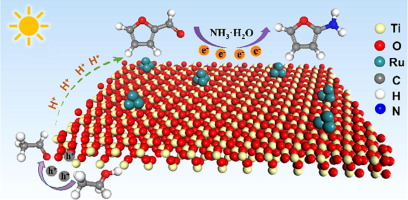62.Electrochemical carbon–carbon coupling with enhanced activity and racemate stereoselectivity by microenvironment regulation
Kejian Kong, An-Zhen Li, YeWang, Qiujin Shi, JingLi, Kaiyue Ji & Haohong Duan*
Nature Communications 2023, 14, 6925.
DOI: 10.1038/s41467-023-42724-2

Abstract
Enzymes are characteristic of catalytic efficiency and specificity by maneuvering multiple components in concert at a confined nanoscale space. However, achieving such a configuration in artificial catalysts remains challenging. Herein, we report a microenvironment regulation strategy by modifying carbon paper with hexadecyltrimethylammonium cations, delivering electrochemical carbon–carbon coupling of benzaldehyde with enhanced activity and racemate stereoselectivity. The modified electrode–electrolyte interface creates an optimal microenvironment for electrocatalysis—it engenders dipolar interaction with the reaction intermediate, giving a 2.2-fold higher reaction rate (from 0.13 to 0.28 mmol h−1 cm−2 ); Moreover, it repels interfacial water and modulates the conformational specificity of reaction intermediate by facilitating intermolecular hydrogen bonding, affording 2.5-fold higher diastereomeric ratio of racemate to mesomer (from 0.73 to 1.82). We expect that the microenvironment regulation strategy will lead to the advanced design of electrode–electrolyte interface for enhanced activity and (stereo) selectivity that mimics enzymes.



